The perfume fashion has crossed the course of history, seducing entire populations. Although the perfume art was far from what we know these days, the Romans were also influenced by it.
LET’S TALK
- Scented ointments in Ancient Rome
- The origin of raw materials
- The perfume fashion in the times of Caesar and Cleopatra
- Who created perfumes during the Roman Empire
- The most common raw materials in Ancient Rome
- The price for a perfume in Rome in the second century A.D.
- Differences between ancient and contemporary perfumes
- What happened after the Roman Empire
SCENTED OINTMENTS IN ANCIENT ROME
Rather than perfume, ancient Rome preferred talking about scented ointments made of flower petals, spices or other natural ingredients mainly originated from the East and city-states of ancient Greece. Their use was quite different from what we know now.
The scented ointments were conventionally used to cure diseases, ward off epidemics or conduct religious ceremonies. In fact, the Latin term of perfume derives from “per fumum” (“from smoke”).
According to the most ancient customs the priests threw scented ointments on braziers to create a scented tongue of smoke that went up to the sky reaching the Gods. That’s how the Romans, as well as other ancient peoples, such as Egyptians and Etruscans, were paying respect to the Gods in order to ask their benevolence.
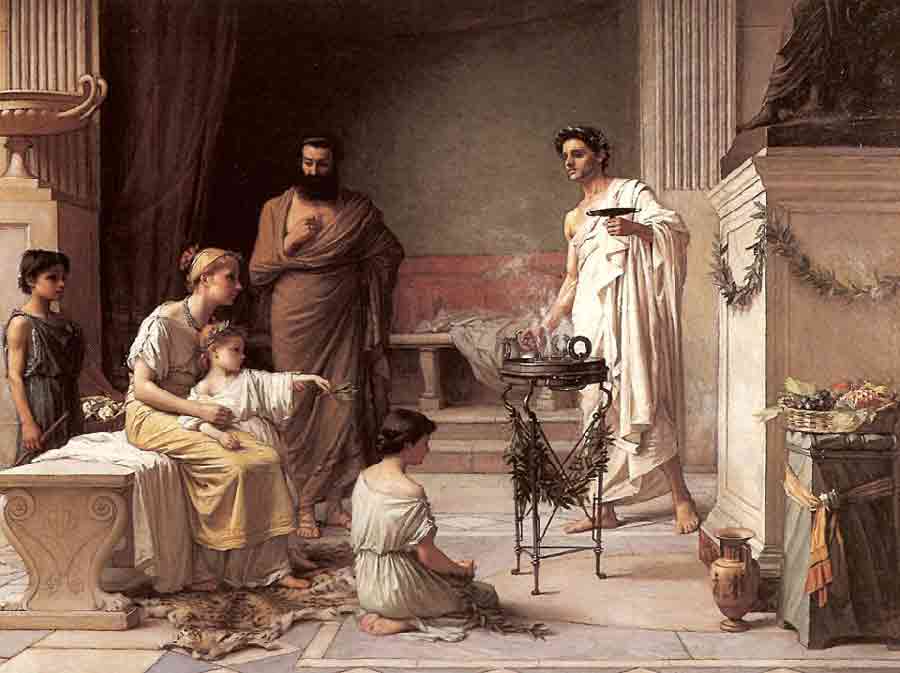
The scented ointments were also used from Egypt to ancient Rome to cleanse the body. In fact, people hadn’t used soap for personal hygiene yet and in order to clean themselves the Patricians, a Roman upper class, had a mixture of clay and oil that they took with a strigil, a metal instrument in the shape of a flat hook.
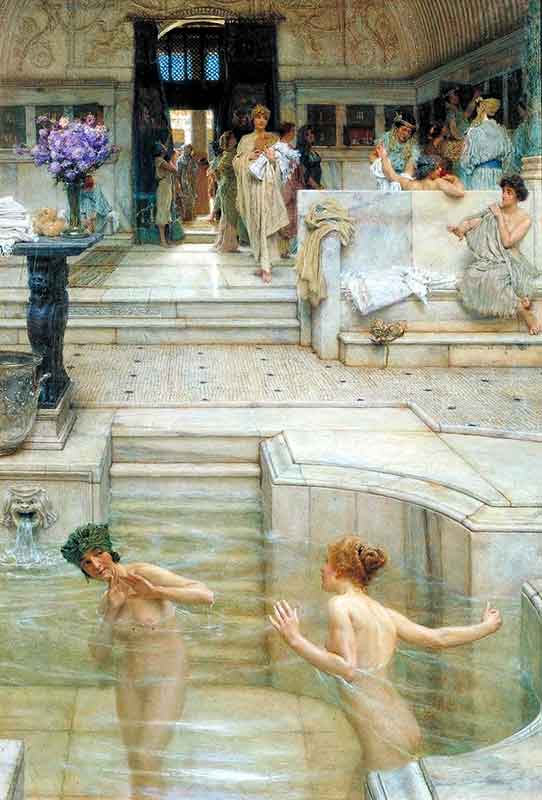
This type of cleansing could also take place at home or in ancient gyms. The Patricians loved being massaged with ointments and scented oils right in the thermal baths, inside special areas called Unctorium. Oils or even wine were often added to the thermal water.
The scented ointments were also playing the leading role during the most convivial atmosphere, for example, on occasion of official banquets. It was common to add some drops of essential oils to water and sprinkle tables and triclinia of the guests. Not to mention that during a meal a few slaves were introducing doves in big water bowls with scented oils. The doves were flying in the way that flapping of their wings would spread perfumed water on the guests.
Among historical anecdotes related to perfumes, the one with Caesar is particularly popular: he used to cover himself with the perfume notes of Telinum, a greasy ointment made of fenugreek, marjoram and yellow sweet clover.
The emperor Caesar wasn’t the only one to cover his body with perfume. The Roman women, besides spreading it on their bodies, were using the perfume to adorn their hair. This tradition seems to come from Greece and Egypt as well. The Egyptian and Etruscan women kneaded herbs and flowers, especially fragrant ones, with fat or beeswax, making small cones in order to introduce them in their hairstyles. Once exposed to the sun, the cones were melting, giving off intense fragrance.
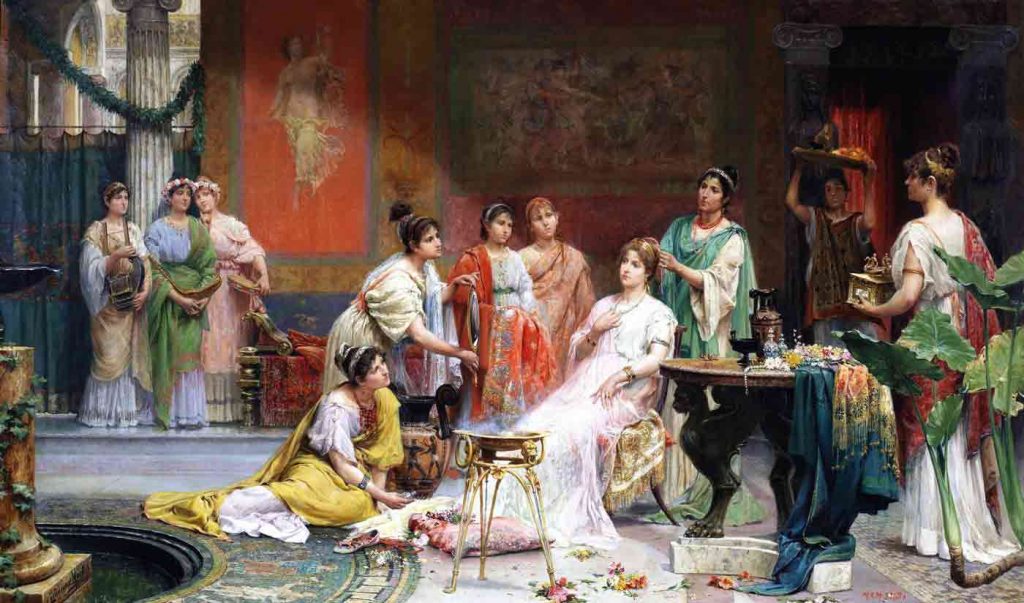
Despite the fact that there hadn’t been any perfume at those times in the form that we know it today, we can affirm that this product had its long evolutionary way during the Roman Empire. It began making its first steps in medical and religious fields and only afterwards it was introduced as a cosmetic, a tool of beauty and status symbol.
THE ORIGIN OF RAW MATERIALS
All raw materials for ointments came from areas conquered by the Roman troops. For this reason, the first ones to use fragrant substances were the Roman soldiers and merchants who had brought the raw materials and different ways of application.
Over the years the Romans also learnt how to make perfumes, ointments, perfumed waters and perfumed powders. It is to them that we owe the distillation process (blow molding technique) and glass vials for perfumes.
The substances were coming from different corners of the world back then. The merchants were travelling in carriages loaded with everything that could be sold in market. Long caravans from Egypt, Syria, Ethiopia, China, and the Middle East and other regions of the Mediterranean were reaching Rome thanks to cargo ships.
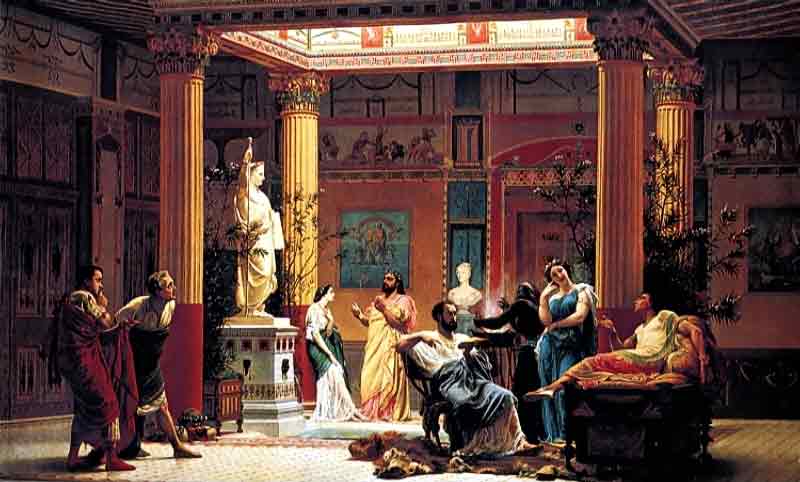
THE PERFUME FASHION IN THE TIMES OF CAESAR AND CLEOPATRA
The perfume fever affected all classes from the Patricians to the commoners. If Cleopatra in Egypt was keeping some sort of a diary with her fragrant creations such as perfumed sails of her ships on occasion of battles, there were also other anecdotes about some Roman emperors.

According to the legend Nero spent four million sesterces (equal to 24 million euros) for a private party in his Domus Aurea (in Latin “Golden House”), where a shower of rose petals soaked in his expensive favorite essence was poured onto the guests. He was not the only one! Plutarch recounted in his writings how Caesar made feast of asparagus seasoned with an aromatic ointment instead of simple oil.
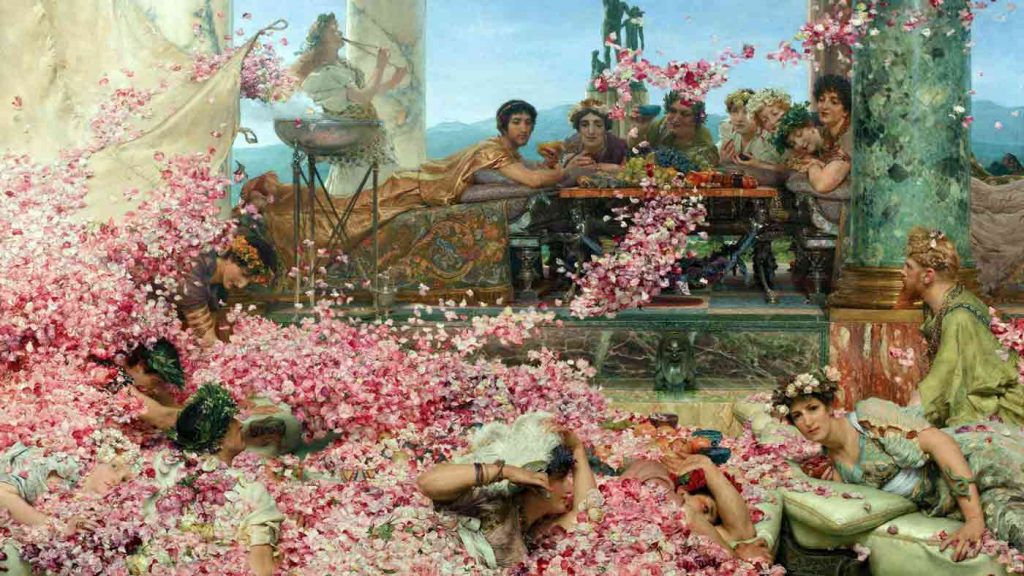
WHO CREATED PERFUMES DURING THE ROMAN EMPIRE
If the emperors, Patrician women and even soldiers were keen on sprinkling their bodies, clothes and hair with fragrant substances, who were those great artisans that had brought the perfume to life? There were no Master Perfumers in ancient Rome, noses like we know today.
These ointments were a prerogative of those who could afford “playing” with raw materials. Each ointment was produced with available ingredients that were changing according to the Roman victories and the cargo unloaded in the ports of Empire. The type of oil, its refinement and purity varied in accordance with the social class.
The master of ointment was mainly male until a great dissemination of this product among freedmen and commoners increased its popularity also among women. Some historical sources confirm that women were also engaged in perfume art, giving two outstanding examples.
The first one comes from Casa dei Vettii, Pompeii, and reveals a wonderful fresco of some putti working out these substances and a nymph intent on decanting her fragrances from a bottle into small vials.
Another famous fresco is situated in Villa Farnesina, Rome. Here we can admire a young lady sitting on a chair that pours perfumed oil into a flask. Nonetheless, it is still too early to talk about the true perfume art, or at least not the one that we know these days.
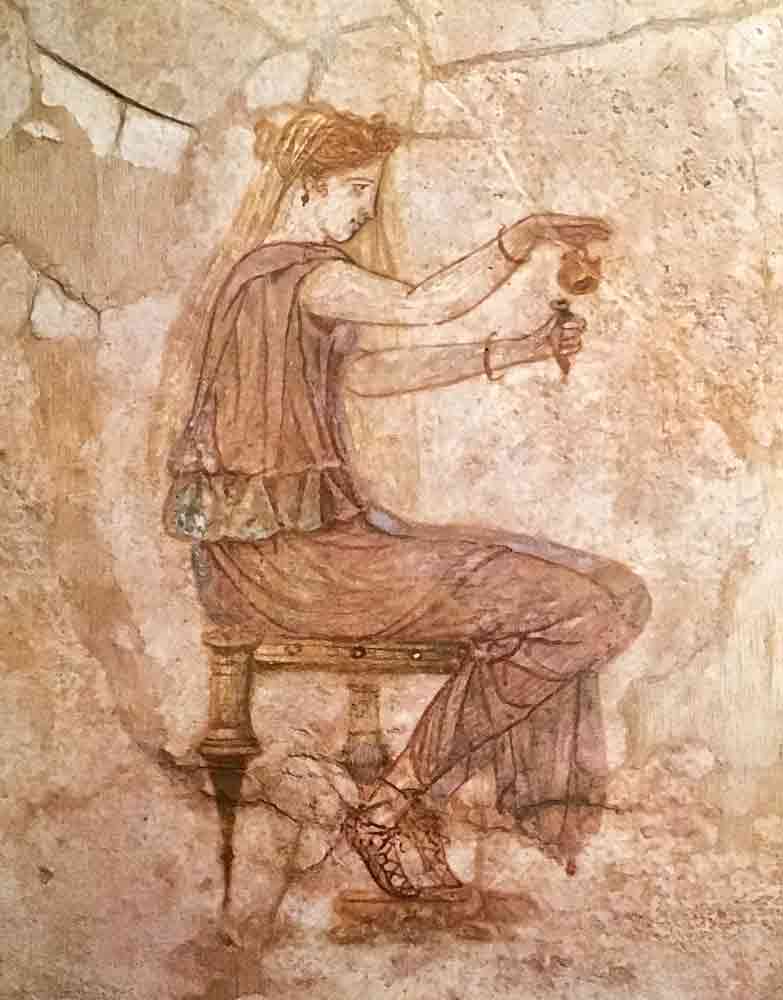
THE MOST COMMON RAW MATERIALS IN ANCIENT ROME
The most common and accessible raw materials came from Roman dominations and included roses, pomegranates, lavender, quinces, grapes, rosemary and basil. The most precious raw materials were cinnamon myrrh, opobalsam (classic incense) and finally resins and roots.
THE PRICE FOR A PERFUME IN ROME IN THE SECOND CENTURY A.D.
The cult of perfumes was spread not only among rich bourgeois but also among the poorest classes of ancient Rome. So what was the price for a perfume back then? The production of ointments was greatly influenced by raw materials which came mainly from abroad, especially from Mediterranean countries such as Alexandria in Egypt, the most important commercial port of the East of those days.
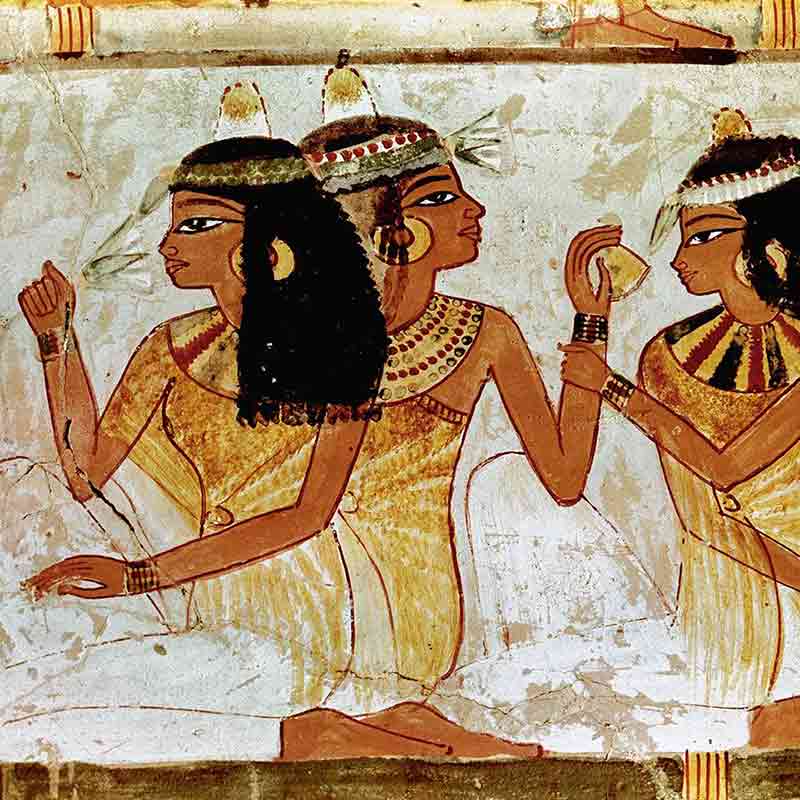
The perfumes at the time were produced with oils and fatty parts and not with an alcohol base. For the most precious ones the olive oil or bitter almond oil was initially used, replaced eventually with Omphacium, olive oil and grape juice (still green, unripe and processed harvest).
It’s not easy to give a price to a single perfume. In fact, besides the creation of an essence, a bottle was an integral part of the cost. The Romans were precursors from this point of view. The Roman women had vessels in different shapes, sometimes even in pure gold. Consequently, the cost of a vessel was added to the cost of raw materials.
The containers were in earthenware, glass, blown glass, alabaster, bronze, lead, silver and gold and all these pieces could be decorated with gemstones. Different shapes were performed: spheres, doves, woman’s heads, tubes, cups, pears or ovals.
In order to have a better idea of the Romans’ passion for perfumes and the costs they were willing to pay, it is enough to think of legendary stories invented only to increase the price of a perfume, for example, harvesting cinnamon in Ethiopia. “In order to get this precious ingredient protected by nests of a Phoenix you had to climb inaccessible cliffs”. Pliny the Elder himself described that anecdote, it was a commercial trick to increase a price.
The most expensive perfume in ancient Rome was probably “Regale Unguentum“. An anecdote about the emperor Tiberius reveals its story. According to historical sources one day the emperor complained in Senate about impressive expenses that Rome incurred for these aromatic and exotic substances, in particular, about 100 million sestertii. Considering that a sestertius in Rome had a current value of six euros, we can understand how exclusive the fragrances were.
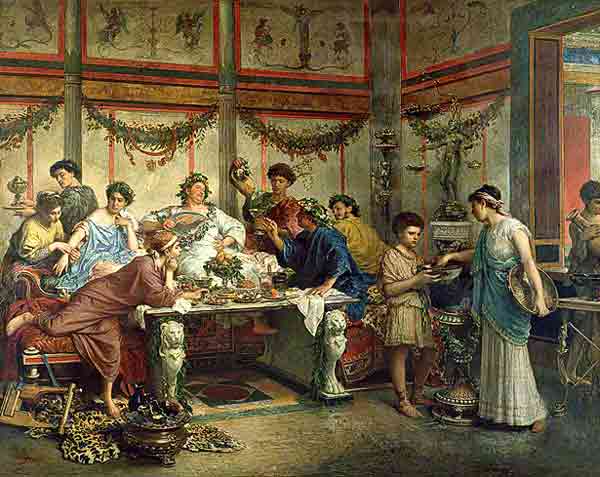
DIFFERENCES BETWEEN ANCIENT AND CONTEMPORARY PERFUMES
The substantial difference between a contemporary Eau de Parfum and scented ointments of ancient Rome is precisely in the principle of production. The use of alcohol and distillation which replaced fatty substances took place only in the 9th century A.D. According to some historical sources the Arabs introduced the distillation process, whereas other testimonies attribute the art of distillation to the Higher Institute of Science of Salerno, always around the year one thousand.
The alcohol is more practical: it’s extremely volatile and dries immediately on the skin. It’s clean and comes at a more affordable price. Compared to the modern perfumes, the fat-based ointments keep the fragrance longer and don’t alter it over time. Moreover, since the product during those times was made of only natural ingredients, it caused less skin irritation, but the prices were certainly much higher than today.
WHAT HAPPENED AFTER THE ROMAN EMPIRE
Contrary to what we might think, the history of perfume is not linear. Many historical periods have no references to the use of perfume, if we talk about the Greeks and Romans.
After the fall of the Roman Empire and the advent of Christianity, which mission was mainly to erase every connection with the pagan traditions from people’s memory, even the use of perfume was stopped. Everything that had pagan origins was refused. But due to the original therapeutic use of oily substances, it returned to be an exclusive prerogative of the wealthiest, who were able to evaluate the good and the bad thanks to their “knowledge”.
Most people stopped practicing the perfume art out of fear or prosecutions. Those who continued their path were exercising it in great secrecy and isolation from the rest of the world. Over time, only some religious representatives started practicing it again, thanks to the so-called Giardini dei Semplici (Simple Gardens).
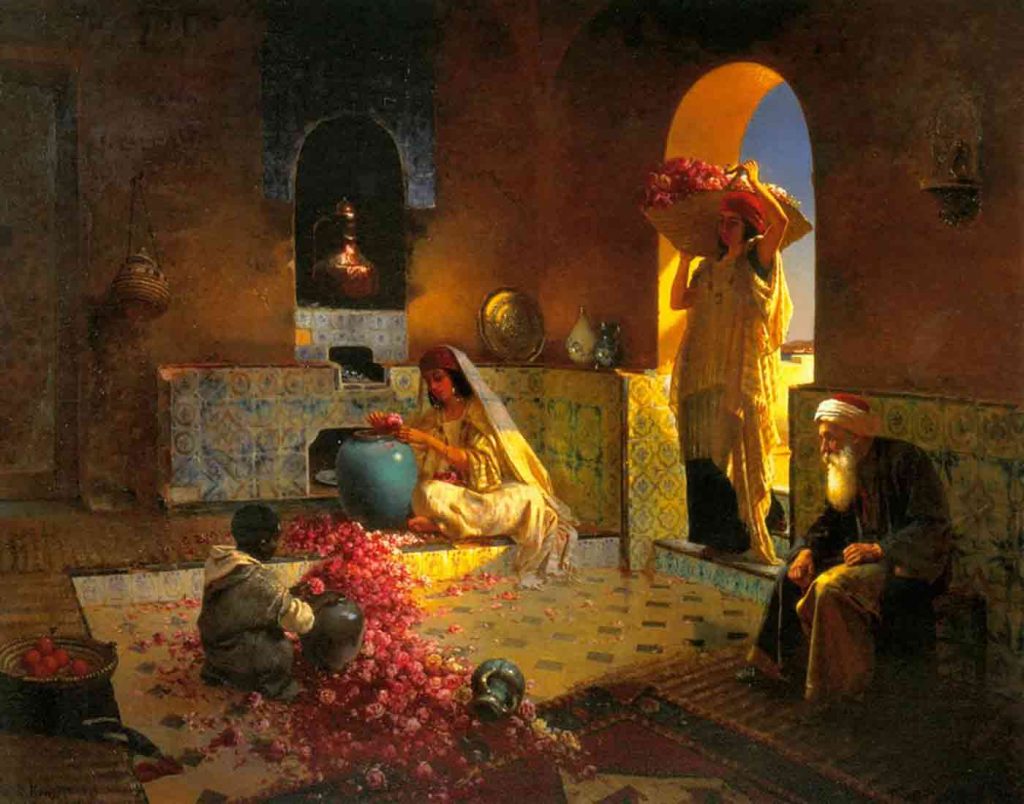
The perfume continued its development only around 1200, when the trade between East and West was renewed during the Crusades, bringing back to Rome spices and aromas that would become common in fragrance applications. From that moment the perfume art has started, developing itself into what we actually know these days.

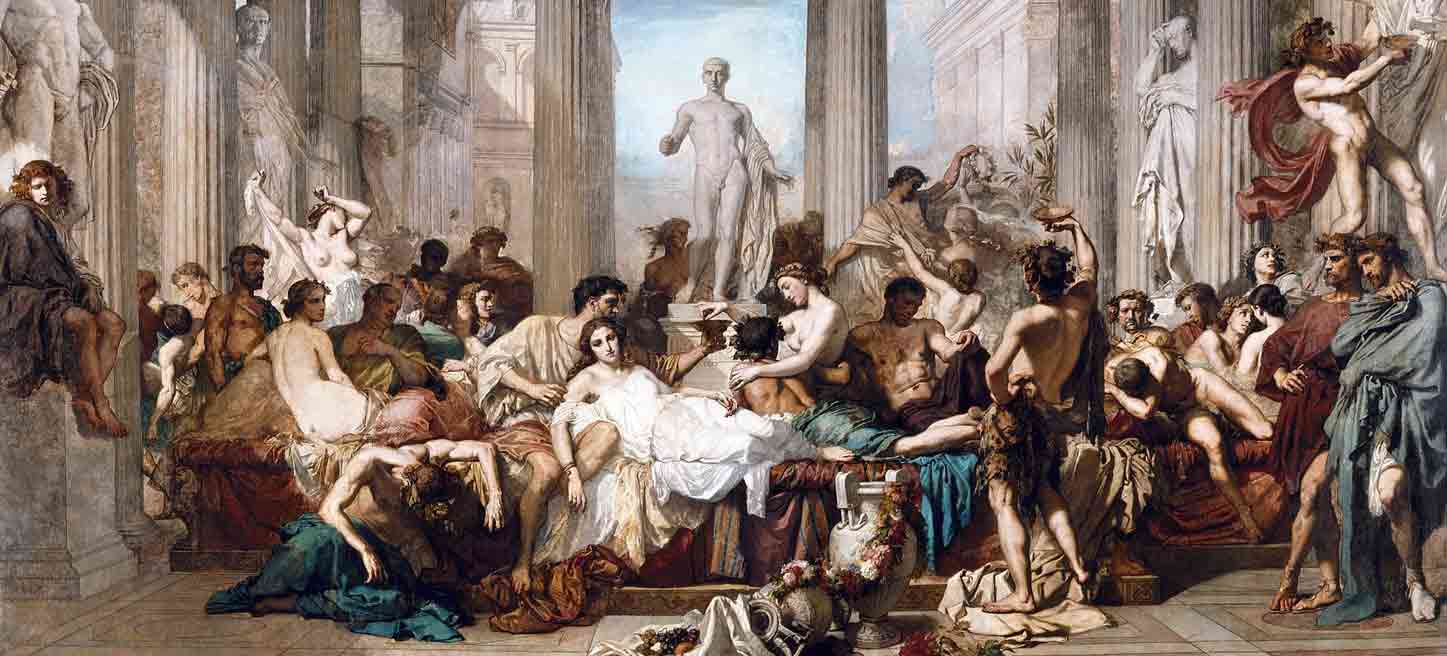
This is so interesting to know that, in ancient Rome, they made perfume with various raw materials like different kinds of flowers. The process they used to make perfume is fascinating. I just love this post. Thank you so much for sharing this article with us.